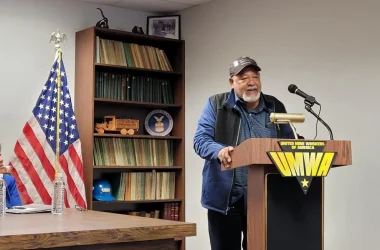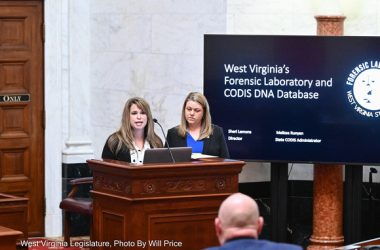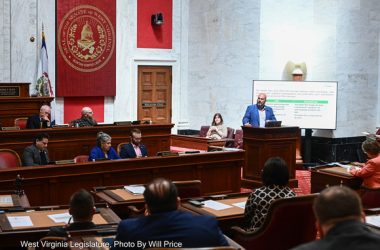CHARLESTON, W.Va. — Of the more than 57,000 West Virginians who started to repay their federal student loans in the 2012-13 fiscal year, 8,035 have since fallen into default, according to data released this week by the U.S. Department of Education.
West Virginia’s 16.2 percent rate of students defaulting is the second highest in the nation, although the state’s rate actually fell from last year’s 18.2 percent. Only New Mexico has a higher default rate this year than the Mountain State, with 18.9 percent of its students defaulting. In 2015, West Virginia ranked third highest in the nation.
“We’re slowly seeing a decline in the default rates, which mirrors the smaller drop nationally. We’re getting there,” said Brian Weingart, the senior director for financial aid at the West Virginia Higher Education Policy Commission. “Schools have started offering more financial literacy as part of first-year experience courses, and that’s not as measurable, but we think that’s having an impact, as far as educating students on their repayment options.”
The data records the number of students who have gone more than 360 days without making a payment on their federal student loans. The data released this year includes students who began repaying in the 2012-13 fiscal year, and last year’s data included students who began paying in the 2011-12 fiscal year.
“It’s not really a good reflection of what’s been happening recently, as far as what we’ve been trying to do as a state,” Weingart said,.
He pointed instead to the HEPC’s data on the total number of students who have to take out loans to go to school.
“If you look at our data, in the 2014-15 academic year, only half of our students took out a student loan in our public four-year institutions, and only 25 percent borrowed a student loan in our two-year public institutions.”
Across the nation, the default rate fell marginally, from 11.8 percent in 2015 to 11.3 percent this year. Within that rate are different subsets of different kinds of schools that have different average default rates. In general, public schools have lower default rates than for-profit schools. The Department of Education allows people to search for a specific institution’s default rate online.
In West Virginia, the four-year public college with the highest default rate is Bluefield State College, coming in at 19.5 percent. That rate is significantly down from the group of students who began repaying their loans in the 2010-11 fiscal year, where 26.8 eventually defaulted.
Jim Nelson, a spokesman for Bluefield State, said the college has been working hard to lower its default rate by establishing, three years ago, a default rate task force to tackle the problem.
“What happens with many of our students is, they are bound to this area,” Nelson said. “The average student age is 27 years old, and 60 percent are female. As a result of family and life obligations, it’s difficult for those students to relocate where the economies are more robust.”
And since the school doesn’t have any on-campus housing, most of its students come from the immediate area or drive in from neighboring communities. Nelson said that this means students have a hard time finding well-paying jobs near them.
Bluefield State is followed by Glenville State College, which had a 16.8 percent default rate, and West Virginia State University, with a 15.4 percent default rate.
Sometimes, students at community colleges don’t have to take out student loans because the programs there are more affordable. Weingart said that when a school has a small group of students taking out these loans, and then a few default, the default rate can paint an image of the school that’s worse than it actually is.
West Virginia’s public two-year community colleges, as a whole, had the highest default rates in the state, with none coming in below 20 percent.
The highest came from Pierpont Community and Technical College, at 27.6 percent. Of its students who began repaying their loans in the 2010-11 fiscal year, 36.7 ultimately defaulted.
At Pierpont, about 72 percent of students end up taking out federal student loans, said Leslie Lovett, the school’s provost.
Lovett said that although the school’s default rate is higher than administrators would like it to be, the rate isn’t too high, considering what little power the school has over a student’s federal financial aid.
Lovett said Pierpont used to require students to complete financial aid literacy course before being eligible for any kind of financial aid, but then the U.S. Department of Education said the school wasn’t allowed add extra requirements to federal financial aid.
Schools also can’t limit how much a student takes out in federal student loans, Weingart said. If the federal government says the student is eligible for $5,000 in loans, for example, the school can’t then limit the student to only taking out $1,000, even if they won’t actually need the full amount.
“I’d like if we could get [Pierpont’s rate] down to 20 percent and be a little more in line with the rest of the community colleges in West Virginia,” Lovett said.
Pierpont was followed by Blue Ridge Community and Technical College, which had a 25.9 percent default rate, and New River Community and Technical College at 25.5 percent.
BridgeValley Community and Technical College had the lowest default rate of all public, community colleges, at 20.4 percent.
Lovett and Nelson said a relatively new partnership with EdFinancial and Inceptia has helped their students figure out ways to repay their loans without falling into default. In 2013, the HEPC and the Community and Technical College System contracted the two companies to provide support so that schools could send in information about at-risk students, and the companies could help those students figure out a repayment plan.
Reach Jake Jarvis at [email protected], Facebook.com/newsroomjake, 304-348-7939 or follow @NewsroomJake on Twitter.





